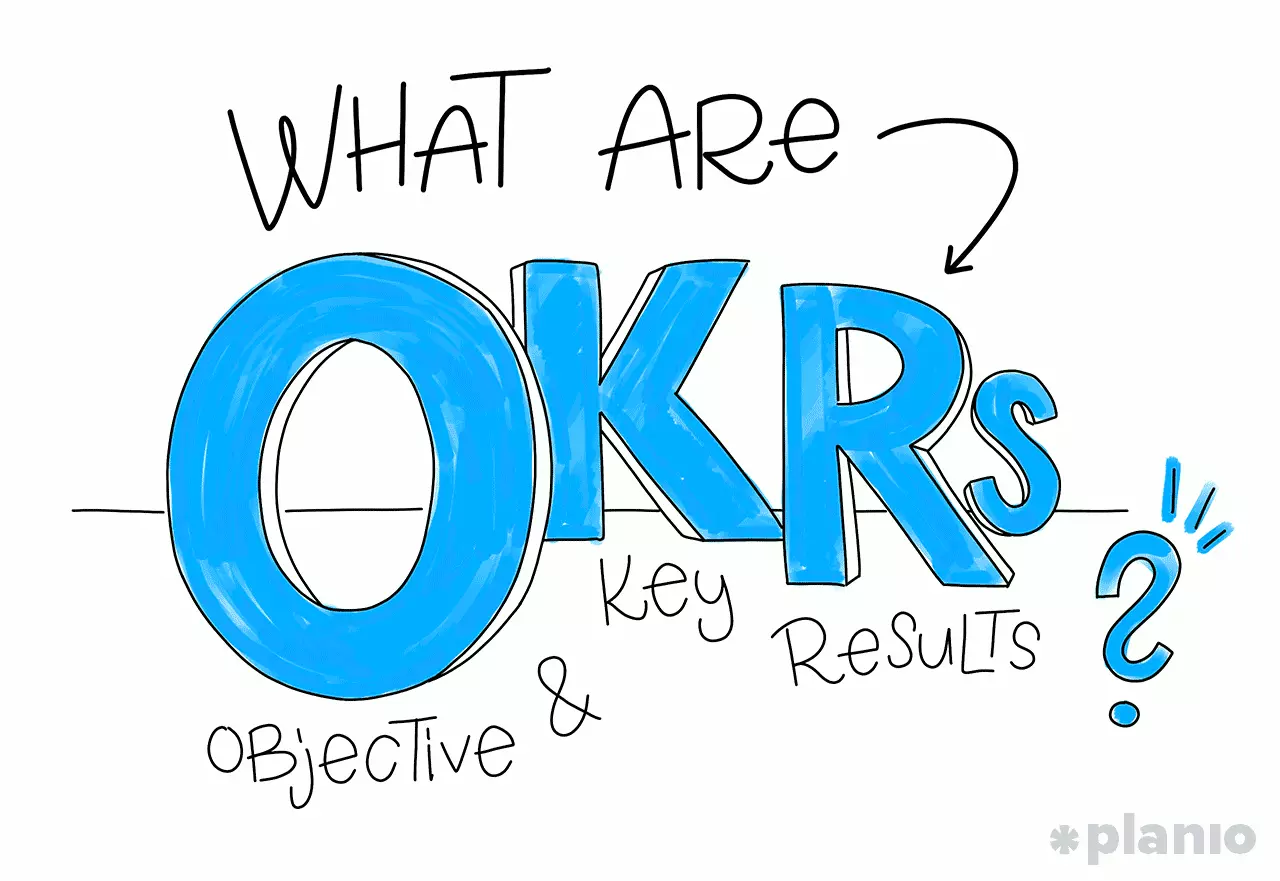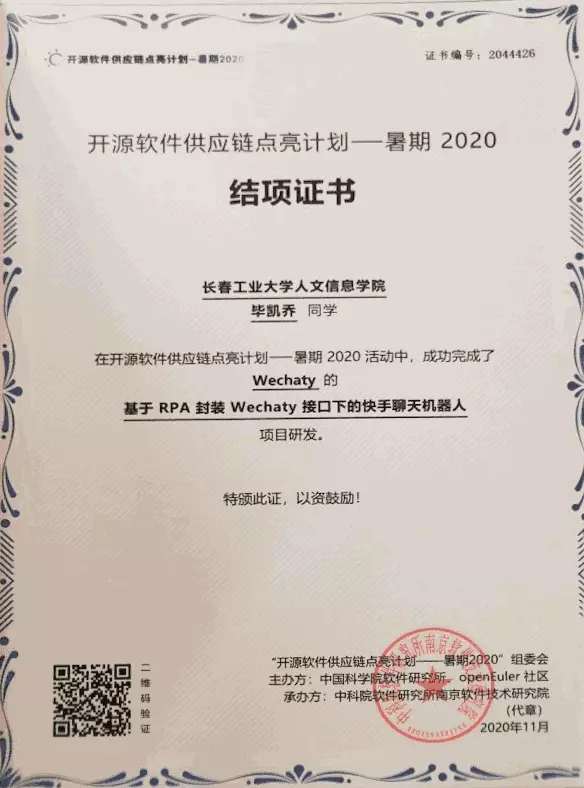In Nov 14, 2020, The Open Source Promotion Plan - Summer 2020 Summit was held in Nanjing (thanks ISCAS & openEuler Community for the organizing!). As an open-source organization we enjoyed this program and we have four people: @univerone, @wj-Mcat, @rickyyin98, and @huan attended the Summit.
Before the travel to Nanjing, in order to make the goal clear, we have a meeting about how to improve the efforts we can influence in this summit, which leads us to consider to use the OKR (Objective and Key Results) to make everyone understand what we should deliver at the summit.
What is OKR
Objectives and key results (OKR) is a goal-setting framework for defining and tracking objectives and their outcomes.
An OKR consists of an Objective, which tells you where to go, and several Key Results, which are the results you need to achieve to get to your Objective. Initiatives are all the projects and tasks that will help you achieve your Key Results.
The following points about the Key Result are copy/pasted from our previous discussion from our AI-ML.Club: BUPT/magic-mirror - OKR管理项目的方式探讨 #17
What is Key Result
The Key Result needs to be an outcome(what we get) instead of output(what we do). At the same time, we have to make sure KRs are value-based, measurable with metrics, and most importantly, should be short.
- Measurable: Key results are measurable and should be easy to grade with a number (Google uses a scale of 0 – 1.0)
- Short: as short as possible
- Value-based
For an Objective update example, in 1958 NASA had 8 goals including examples like:
“The establishment of long-range studies of the potential benefits to be gained from, the opportunities for, and the problems involved in the utilization of aeronautical and space activities for peaceful and scientific purposes.”
By 1961, thanks to Kennedy, NASA had one Ultimate goal:
“Before the decade is out, land a man on the moon and return him safely to earth”.
A short goal will make it easy to be understood, so we should always prevent long descriptions.
Measurable
Almost anything can be measured. If you’re struggling to find Key Results for an Objective, ask yourself “How will I know when my Objective has been achieved?”. Make sure to choose Key Results that are outcome based, look for metrics you don’t directly own or control, but that you can influence.
What is Initiative (To-do list)
When we are planning to do something, we are very likely to define a list of todos, because we can control it very easily, like
I will write 3 blogs this week.
However, the above description will miss the direction of why we need to do that, and what we want to get an outcome of that action. So we need to move into the high level of a todo description, defines what we want to get as a result of our actions:
I will get my new blogs read by 1,000 chatbot developers.
The above result will not be able to be controlled by ourselves, but we can only influence it, which means we have to write a better blog so that the readers will share it, and we have to think about how to spread the blog article to cover the target users (chatbot developers in this case).
So, I believe the reason the Padoo introduce the initiative concept to OKRs is that everyone wants to have a TODO list for their OKRs, which could make them more comfortable. And they always want to put a TODO list as the Key Results, which is not right and needs to be clarified.
Key Result v.s. Initiative
The most important when we are using OKRs is that we have to make sure that we are listing the real Key Results instead of Initiatives as our Key Results.
According to What is an OKR?:
1. Key Result
“How do I know if I’m getting there?” A Key Result shows you how you’re progressing towards your Objective. Think of it as a signpost with a distance marker.
A Key Result is a metric with a starting value and a target value that measures progress towards an Objective.
2. Initiative
“What will I do to get there?” An Initiative describes what you’ll do to influence your Key Results. Think of it as the description of what you’ll do to get to your destination.
An Initiative is a description of the work you’ll do to influence a Key Result.
In short, a Key Result is “What you can get(outcome)”, and the Initiative is “What you can do(output)”.
| Difference | Outcome V.S. Output | Influence V.S. Control | Value V.S. Activity |
|---|---|---|---|
| Key Result | What you can GET (outcome) | You cannot control it, you can only INFLUENCE it | Value-based |
| Initiative | What you can DO (output) | You can CONTROL it directly | Activity-based |
At last, Key Results must be measurable.
Wechaty OKRs
The following OKR discussion is copy/pasted from wechaty/summer-of-code - Wechaty Open Source Software Supply Chain 2020 Najing Summit OKR Review #26

In this open-source summit, we have the following Ultimate Objectives and Key Results:
Ultimate Objectives
- Make Wechaty to be known as one of the best open-source projects in China
- Make more people get to know what problem that Wechaty can solve.
Wechaty is a RPA SDK for Chatbot Makers that supports connecting to WeChat, DingTalk, Lark, WhatsApp, Teams, and Gitter and it can build a chatbot in 6 lines of code in almost any language.
Ultimate Key Results
- 100+ influences on-site
- 500+ new developers join our community:
Wechaty Developers’ Home WeChat room, Gitter, Stars on GitHub
- 6 blog posts with video embedded form the event with 3,000+ influences
- A Standard of Process (SOP) for promoting Wechaty in events in the future
Check-list, Resources, Scripts
Team OKR
1. OKR: @wj-Mcat
Objectives
- Tell a story that how do I start python-wechaty open-source project and make it attractive
- Give a live-coding process that can invite developers into Wechat Group and play with one/two games.
Key Results
- Make a presentation that influence 30+ developers on-site
- Write a blog post for the representation that gets 100+ reads from chatbot developers.
- Build a Wechat Group at the beginning of the presentation to include 30+ audiences in the rooms.
2. OKR: @univerone
Objectives
- Make Wechaty draw the most attention among all the projects.
Key Results
- Collect videos(Captured by Dji and Talk videos), Collect relevant pictures, make a vlog video(with help from Bohao), publish it on YouTube, has 100 views.
- Write a blog and have 100 views.
- Introduce Wechaty to more than 20 people.
3. OKR: @rickyyin98
Objectives
- Make Wechaty all design to be known as one of the most attractive open-source design in this event
- Set up a SOP and make it can cover all similar activities
Key Results
- Present our projects via live code game & flyer, influence 200+ developers
- convert 20+ developers to Wechaty Developer.
4. OKR: @huan
Objectives
- Tell a story form the Wechaty open source community and make it attractive
- Play a ding/dong game with audiences in the room to demo what Wechaty can do and make it fun
Key Results
- Make a presentation that influences 50+ developers on site
- Write a blog post for the presentation that get 100+ reads from chatbot developers
- Build a WeChat group at the beginning of the presentation to includes 50+ audiences in the room
Related Links
Teaser image credit: What Are OKRs? How to Use OKRs for Planning (and Achieving) Your Goals

 今年夏天,Wechaty 社区与 9 位开源后浪的故事
今年夏天,Wechaty 社区与 9 位开源后浪的故事